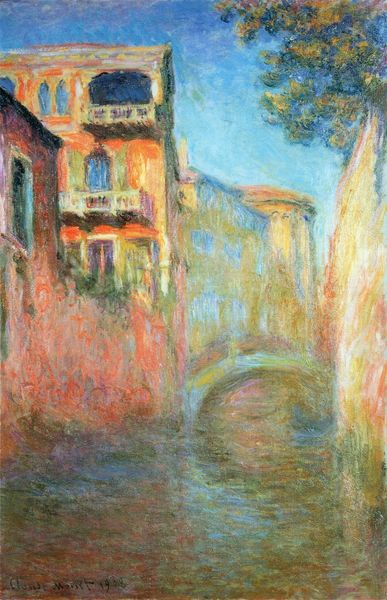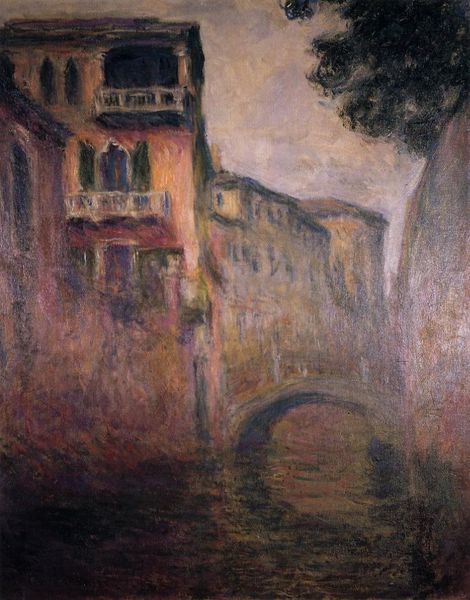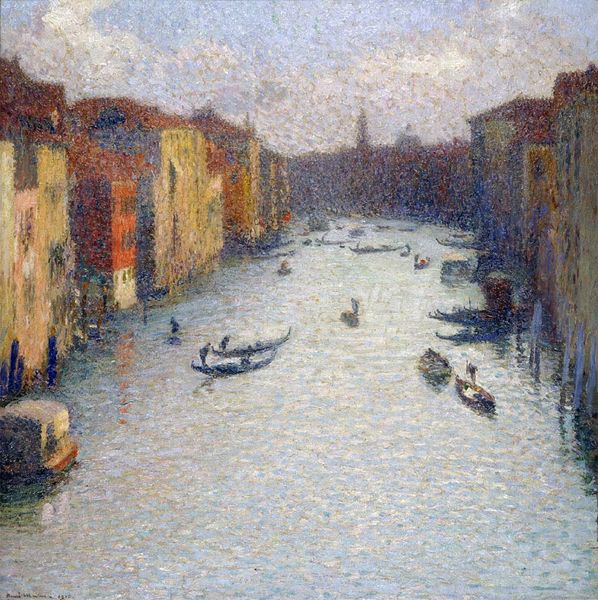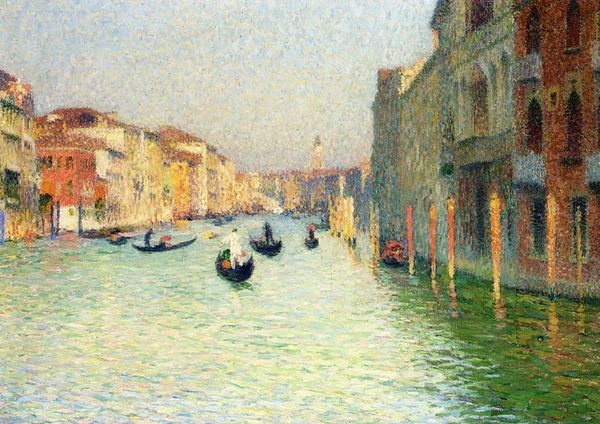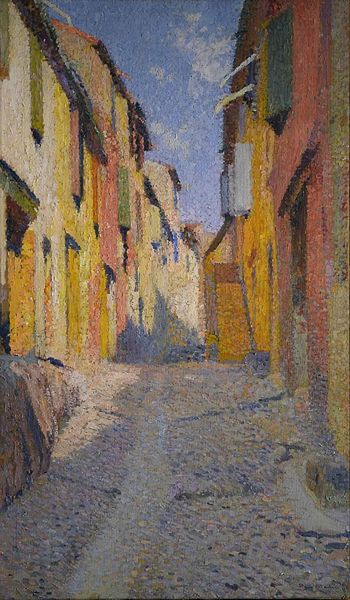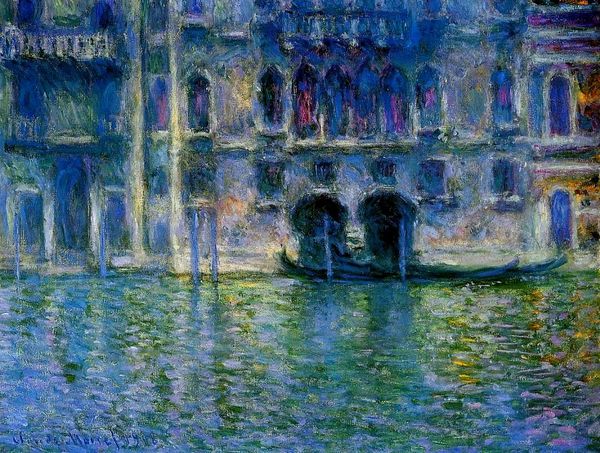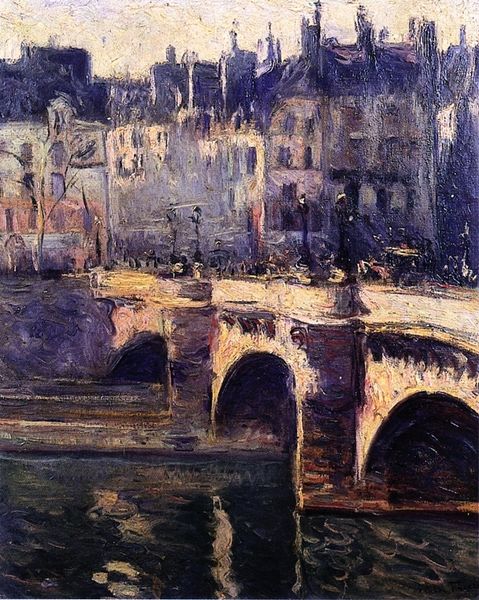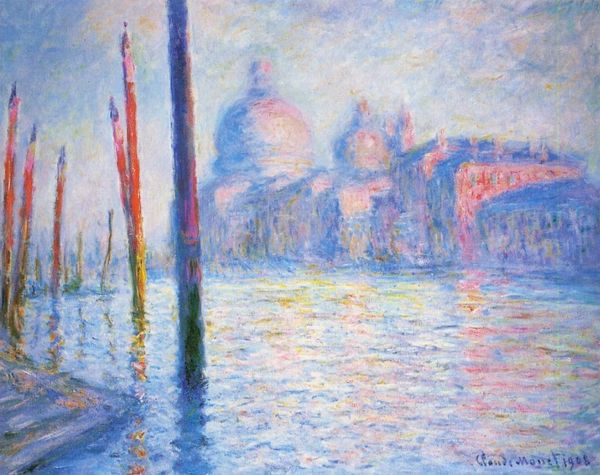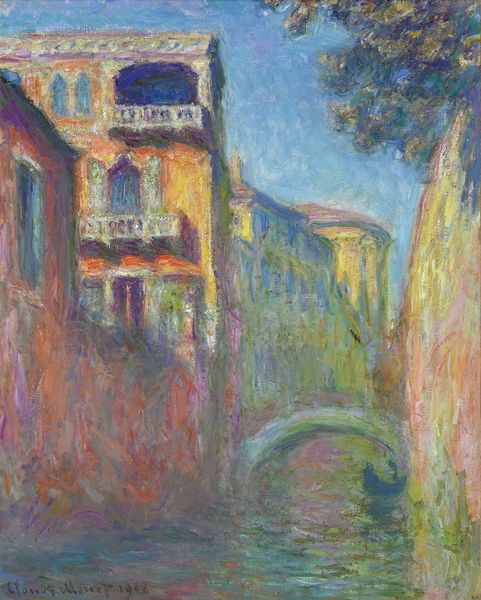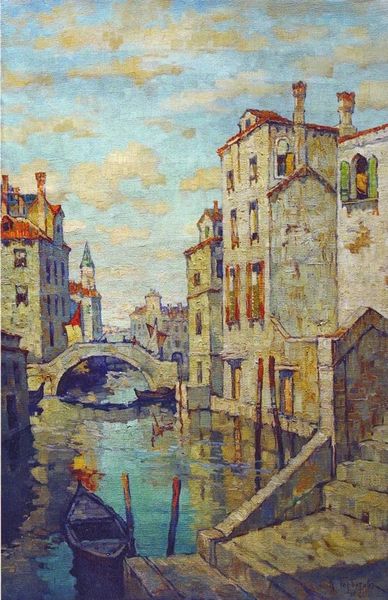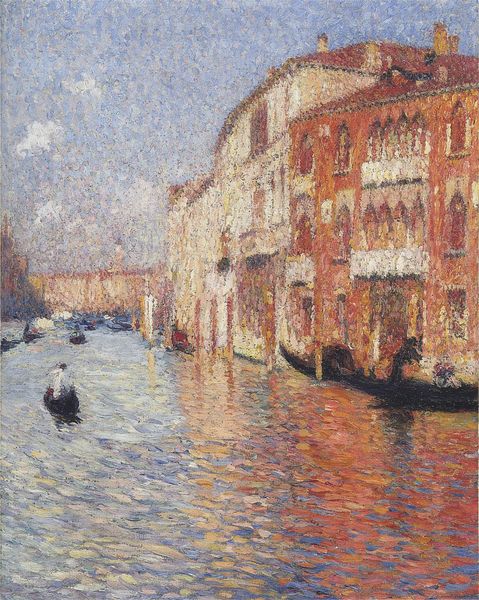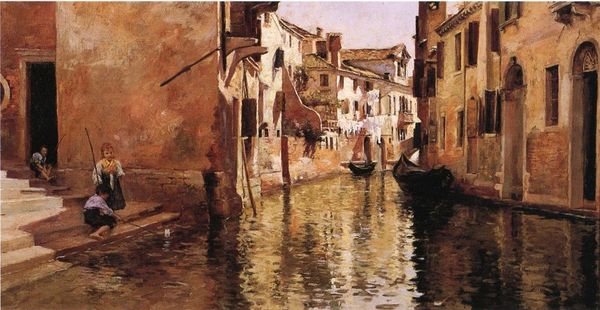
painting, oil-paint, impasto
#
boat
#
venetian-painting
#
painting
#
oil-paint
#
landscape
#
house
#
impressionist landscape
#
oil painting
#
impasto
#
seascape
#
water
#
cityscape
#
post-impressionism
#
building
Copyright: Public domain
Editor: Here we have Henri Martin's "Canal in Venice," an oil painting that appears to capture a slice of Venetian life. The buildings lean in, almost mirroring their reflections in the water. What do you see in this piece, in terms of its symbolism? Curator: I'm struck by how the water serves as both a mirror and a veil. It reflects the tangible world – the houses, the light – but it also distorts it, rendering the familiar as something ethereal. Think about water’s symbolism through the ages. What do you know about Venice itself and the importance of the canals? Editor: Well, canals are what makes Venice unique, right? The primary way of transit... a kind of watery maze. Curator: Exactly. Now consider how Martin renders the water with these visible brushstrokes. The impasto technique gives the water movement and almost a life of its own. This treatment transforms it from a mere transportation route into an active character in the city’s narrative. It seems to ask, where does the city end and the reflection begin? Editor: So the blurring of reality and reflection represents something about Venetian identity? Curator: Perhaps. It reminds me how memory works, especially collective memory. The sharp details fade and we are left with something dreamlike. Do you notice the almost dream-like light? It adds to the effect. Editor: I hadn't thought of it that way, but I see what you mean! The shimmering quality almost feels timeless. I'm left wondering if it is a specific scene or an idea of Venice itself. Curator: Precisely. The symbol evokes multiple meanings, revealing cultural continuity, or perhaps even a subtle melancholy for something lost, or forever changing.
Comments
No comments
Be the first to comment and join the conversation on the ultimate creative platform.
